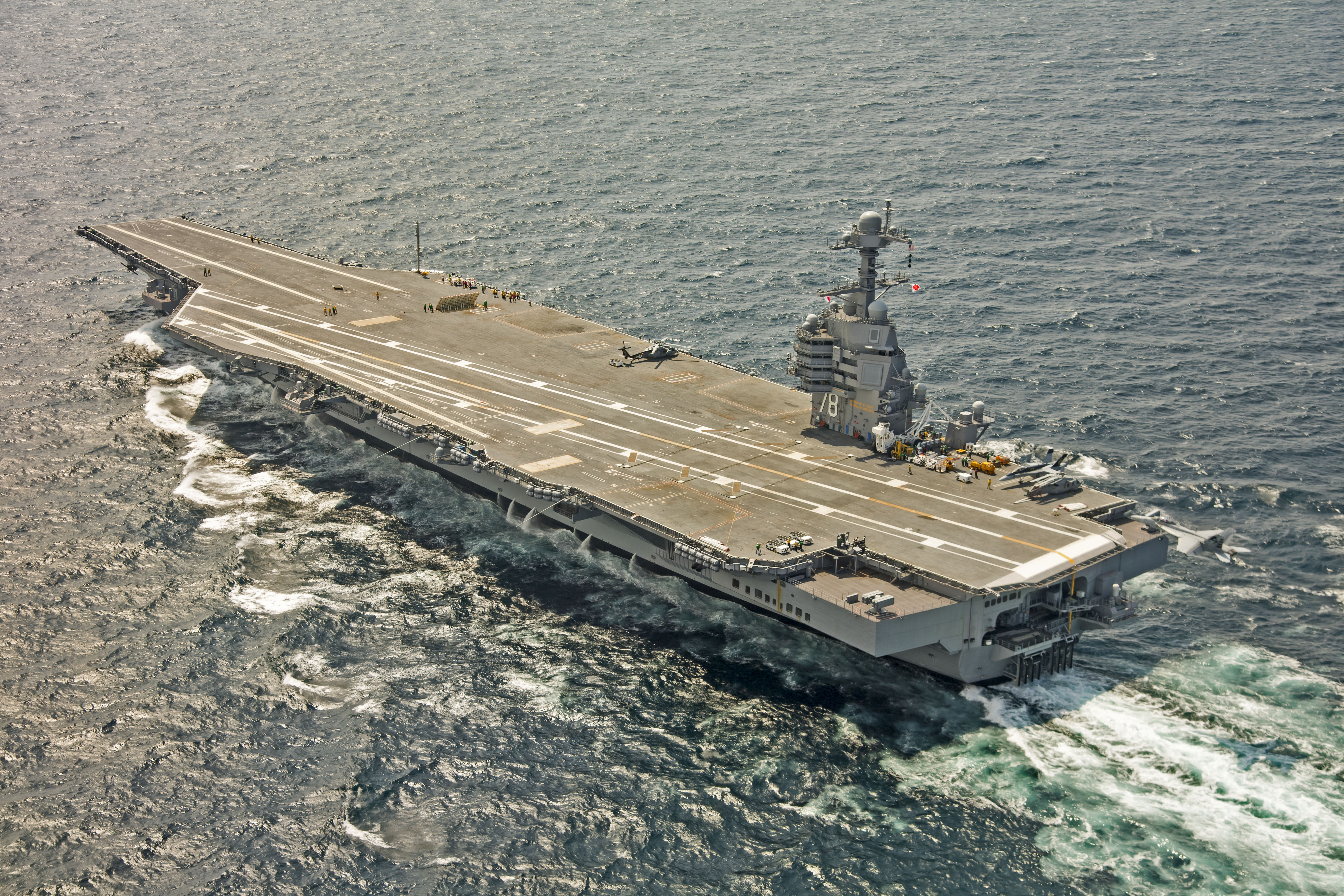
CAPITOL HILL – Unforeseen problems in repairing USS Gerald R. Ford (CVN-78) will push delivery of the carrier back to the fleet by three months, into October, Navy officials told a House Armed Services Committee panel on Tuesday.
The initial 12-month post-shakedown availability (PSA) was designed to fix any problems that arose during the carrier’s first at-sea period, when the crew works the ship hard to help identify any problems in construction, as well as to tackle any work that the Navy and shipbuilder agreed to bump from the construction period to PSA. The carrier had planned to conduct a one-year PSA, then work up with its crew and deploy in 2021.
The new delay is due to more time needed to repair Ford’s nuclear propulsion system and Advanced Weapons Elevators, Navy acquisition chief James Geurts told the HASC’s seapower and projection forces subcommittee.
“All three of those causal factors – making the adjustments to the nuclear power plant that we noted during sea trials, fitting in all of the post-shakedown availability workload and finishing up the elevators – they’re all trending about the same time,” he told the committee. “So, October right now is our best estimate. The fleet has been notified of that. They’re working that into their train-up cycle afterward.”
Subcommittee ranking member Rep. Rob Wittman (R-Va.) said he had heard concerns of the initial July delivery date during a recent visit to Huntington Ingalls Industries’ Newport News Shipbuilding yard, where the carrier is undergoing repairs.
“As I talked to the shipyard workers there, they have concerns about the time frames regarding the post-shakedown availability,” Wittman said during the hearing.
Problems with the elevators are well-known. The Ford class was designed to increase the aircraft sortie generation rate by 25 to 30 percent over the previous Nimitz-class of nuclear aircraft carriers, and Ford’s 11 weapons elevators were key to that effort.
However, the elevators have suffered reliability issues due largely to software problems, USNI News understands. To date, only two of the elevators meet Navy standards. The second elevator was delivered earlier this month.
Problems with the propulsion system are less understood publicly. The problem isn’t resident in the two nuclear reactors aboard but rather the ship’s main turbines generators that are driven by the steam the reactors produce.
Sources familiar with the extent of the repairs have told USNI News two of the main turbine generators needed unanticipated and extensive overhauls. As Geurts told Congress, the ship’s company discovered the problem during sea trials.
In May, Ford returned to port early after it suffered an engineering casualty during an underway ahead of the PSA.
“The ship experienced a propulsion system issue associated with a recent design change, requiring a return to homeport for adjustments before resuming at sea testing,” Colleen O’Rourke, spokeswoman for Naval Sea Systems Command, told Navy Times at the time.
In a Tuesday statement to USNI News, Huntington Ingalls Industries said, “We are currently working closely with the Navy to evaluate the redelivery schedule of aircraft carrier USS Gerald R. Ford’s (CVN 78) post shakedown availability.”





